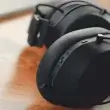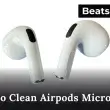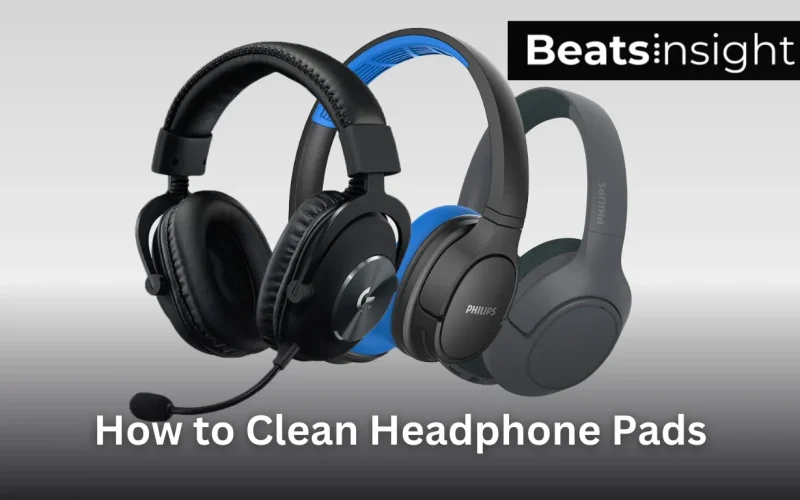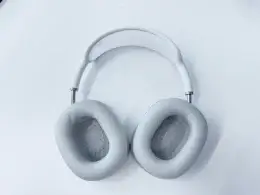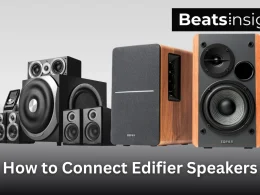How to clean headphone pads is something most people don’t think about until their ears start to itch or their headphones begin to stink. I learned this the hard way after months of daily use turned my go-to pair into a breeding ground for sweat, skin oils, and odor. If you’ve ever wondered how to clean headphone ear pads or dealt with that persistent smell on your headphones ear pads, you’re in the right place.
This isn’t guesswork or generic advice. It’s the process I’ve developed after cleaning everything from Apple’s AirPods Max to Sony’s WH-1000XM5, Logitech’s fabric-lined headsets, and Razer’s sweat-magnet gaming models. Whether your ear pads are leather, foam, velour, or even non-removable, I’ll show you exactly how to clean them safely, effectively, and without damaging the materials.
Let’s get straight on how to clean headphone ear pads. No fluff. No confusion. Just a step-by-step, proven method to make your headphone pads look, feel, and smell like new again.
If you’re using Bose headphones and your ear pads are too worn or damaged to clean effectively, learn how to replace Bose ear pads step-by-step to restore comfort and sound quality.
Tools and Supplies You Need Before Cleaning Headphone Pads
To clean headphone pads effectively, you need a microfiber cloth, mild soap, warm water, and cotton swabs. For deeper cleaning or deodorizing, tools like baking soda, leather conditioner, and a UV sanitizer can help. Always match the supplies to your headphone’s material foam, leather, or fabric to avoid damage.
Must-Have Tools for All Headphones
These basic items are safe for most over-ear and on-ear headphones:
- Microfiber cloth – Gentle enough for daily wiping and grime removal
- Cotton swabs (Q-tips) – Ideal for getting into creases and seams
- Warm water – Use to lightly dampen cloths (never soak the pads)
- Mild soap (unscented, alcohol-free) – Effective on oils and sweat without damaging materials
- Paper towel or soft drying cloth – Helps blot moisture and speeds up air drying
Optional but Powerful Add-Ons
If you want a deeper clean or have premium headphones (Apple, Sony, Razer, Logitech), these tools can improve results:
- Leather conditioner – Essential for protein leather pads like those on AirPods Max or WH-1000XM5
- Soft-bristle toothbrush – Helps lift dirt from velour or mesh without damage
- Isopropyl alcohol (70% or less) – Great for disinfecting hard plastic surfaces, but avoid on foam or leather
Advanced Tools for Odor Removal & Deep Cleaning
These are especially useful if your pads have built-up odor from sweat, heavy use, or gym sessions:
- Baking soda – Neutralizes odor; sprinkle on dry pads and vacuum after several hours
- Diluted hydrogen peroxide – Spot-treats tougher smells, especially on fabric or foam
- UV-C light sanitizer – A chemical-free way to kill bacteria, ideal for shared or high-use headphones
- Compressed air – Useful for blowing dust out of non-removable seams and mesh grills
Pro Tip: Before cleaning, always check your headphone brand’s cleaning guidelines. Some materials especially synthetic leather or memory foam can react poorly to alcohol or harsh cleaners. When in doubt, stick to a lightly damp cloth and air drying.
How to clean headphones ear pads (Step-by-Step for All Types)
To clean headphone pads safely, wipe the surface with a damp cloth and mild soap, deep clean with gentle tools, let them air-dry completely, and follow simple habits to prevent odor and bacteria. Use methods specific to your headphone type, whether foam, leather, or non-removable.
Step 1: Surface Cleaning (Quick, After-Use Routine)
For everyday cleaning, this is your go-to method. It keeps buildup away and extends pad life.
- Remove the pads if they’re detachable. If not, proceed gently with spot-cleaning.
- Dampen a microfiber cloth with warm water and a drop of mild, unscented soap.
- Lightly wipe the surface of each pad, especially where it touches your ears.
- Use cotton swabs to clean tight seams and edges.
Best for Apple AirPods Max, Sony WH-1000XM5, Razer Kraken, and Logitech G-series headsets.
Step 2: Deep Cleaning (Weekly or as Needed)
When your headphones smell or feel grimy, a deeper clean is necessary. Here’s how to do it without damaging them:
- Mix warm water and mild soap in a small bowl.
- Lightly soak a microfiber cloth — never drench it. Wring it out well.
- Wipe down the pads thoroughly. For fabric or mesh, use a soft toothbrush in circular motions.
- For non-removable pads, gently use damp cotton swabs around the edges without letting moisture seep inside.
Never submerge the pads or let water drip into the speaker components.
Step 3: Safe Drying Techniques
Drying is as important as cleaning. Improper drying causes odor and damages materials.
- Gently blot each pad with a clean towel.
- Place them face-up in a cool, dry space.
- Let them air-dry for at least 8 hours no sunlight, no blow dryers.
- Do not reattach or use until completely dry.
Step 4: Prevent Odor and Bacteria Long-Term
Clean once, but prevent always. These tips will keep your headphone pads fresh longer:
- Wipe pads after every use, especially if you’ve been sweating.
- Store your headphones in a dry case with silica gel packs to control moisture.
- Sprinkle a small amount of baking soda inside the earcup (not on the speaker) and leave overnight, then vacuum or brush off.
- Use a UV sanitizer weekly to kill invisible bacteria and mold spores.
If you’re using worn-out headphones and considering an upgrade, check out this guide to the best wireless gaming headsets under $200 for high-performance options that balance comfort, audio quality, and price.
How to Clean Apple Headphone Pads (AirPods Max & Beats)
To clean Apple headphone pads safely, remove the cushions, use a lightly damp microfiber cloth with mild soap, and avoid excess moisture. For AirPods Max, the magnetic cushions detach for cleaning. For Beats, gently clean the attached foam or leather pads in place and allow them to air dry completely.
AirPods Max: Magnetic Cushion Cleaning
Apple AirPods Max use removable magnetic memory foam ear cushions wrapped in a breathable mesh fabric. These should be cleaned carefully to preserve both the cushion and the magnetic connectors.
Cleaning steps:
- Detach the magnetic pads by gently pulling them off the ear cups.
- Mix warm water with a drop of mild, unscented soap.
- Lightly dampen a soft microfiber cloth in the solution.
- Wipe the exterior mesh and foam surface without soaking.
- Pat dry with a clean towel and let air dry for at least 8 hours before reattaching.
Dealing with stubborn buildup inside your earbuds? Here’s how to safely clean earwax from AirPods to restore sound clarity.
Avoid:
- Spraying liquids directly onto the pads
- Using alcohol-based cleaners
- Applying pressure to the mesh or inner magnet area
Beats Solo & Beats Studio: Foam vs. Leather Pad Cleaning
Beats headphones come in various models, some with synthetic leather and others with fabric-coated foam. Since Beats ear pads are not designed to be removed, surface cleaning must be done with care.
For leather-style pads (Beats Studio):
- Wipe gently with a cloth dampened in diluted mild soap and water.
- Avoid soaking the seams or edges of the pads.
- Dry immediately using a soft towel and allow to air dry fully.
For fabric or foam pads (Beats Solo):
- Use a dry cloth to remove dust and loose particles.
- Lightly dampen a cotton swab for spot cleaning with diluted soap solution.
- Gently blot the surface never scrub or press.
- Let the pads air dry completely before use.
After cleaning, if your headphones aren’t connecting properly, here’s how to pair Beats Studio Pro to your device.
What Apple Recommends vs. What They Don’t Tell You
Apple’s Official guidelines: Apple recommends wiping pads with a slightly damp cloth and mild soap, followed by drying with a soft, lint-free towel.
What Apple does not mention:
- Drying time: Pads should air dry for a full 8 hours to prevent internal moisture retention.
- Odor prevention: Regular use of a dry cloth after listening sessions reduces sweat buildup.
- Safe deodorizing: Apple doesn’t address smell use odor-neutral methods like placing pads in a sealed bag with a charcoal pouch to remove unwanted scents.
How to Clean Sony Headphone Pads (WH-1000XM4/XM5)
To clean Sony headphone pads, including the WH-1000XM4 and WH-1000XM5 models, use a lightly dampened microfiber cloth with diluted mild soap to wipe the synthetic leather. Avoid harsh chemicals or soaking the pads. Let them air dry completely before use to prevent moisture damage or material breakdown.
WH-1000XM4 and WH-1000XM5: Synthetic Leather Cleaning Method
Sony’s WH-1000XM series uses synthetic leather cushions that require gentle handling. Cleaning them properly will preserve sound quality, comfort, and the integrity of the material.
Recommended cleaning steps:
- Mix warm water with a drop of unscented, alcohol-free soap.
- Lightly dampen a soft microfiber cloth in the solution and wring out excess moisture.
- Gently wipe the surface of the ear pads, focusing on areas that come into contact with skin.
- Avoid wiping along seams or edges where moisture can enter the foam.
- Use a dry, clean cloth to blot the pads immediately after wiping.
- Air dry in a well-ventilated area for at least 6 to 8 hours.
Do not:
- Use alcohol-based sprays or disinfectant wipes
- Apply pressure or scrub the material
- Expose the pads to direct sunlight or forced heat
Common Problems: Peeling, Discoloration, and Pad Wear
Owners of WH-1000XM4 and WH-1000XM5 headphones often report issues like peeling leather, faded coloring, or hardened foam. These problems are typically caused by:
- Exposure to sweat and skin oils without regular cleaning
- Improper drying after cleaning or use
- Use of alcohol-based products that degrade synthetic leather
- Frequent wiping with abrasive cloths or paper towels
User-Tested Strategies to Prevent Moisture Damage
To extend the life of Sony headphone pads and reduce long-term odor or material damage, apply the following best practices:
- Wipe down pads after each session using a dry microfiber cloth to remove oils and moisture.
- Store headphones in a breathable case with a silica gel packet to control humidity.
- Avoid using headphones immediately after workouts when body heat and sweat are high.
- Limit deep cleaning to once every few weeks unless visibly soiled.
- Let pads rest overnight after cleaning to ensure complete evaporation of moisture.
Accidentally got water inside your earbuds? Here’s how to get water out of AirPods quickly and safely before it causes damage.
How to Clean Razer Headphone Pads (Kraken, BlackShark, Nari)
To clean Razer headphone pads, including Kraken, BlackShark, and Nari models, use a microfiber cloth lightly dampened with diluted soap and water. Gently wipe the pad surface to remove sweat and oils, then let the cushions air dry completely. Avoid using alcohol, bleach, or soaking the pads to prevent damage to the material.
Razer Kraken, BlackShark, and Nari: Safe Cleaning Procedure
Razer gaming headphones are built for long sessions, which makes their ear pads especially prone to sweat buildup and odor. Proper care is essential to maintain both comfort and durability.
Step-by-step cleaning method:
- Prepare a bowl of warm water mixed with a small amount of mild, fragrance-free soap.
- Lightly dampen a microfiber cloth and wring out excess liquid completely.
- Wipe the ear pads gently, focusing on the areas most exposed to sweat and skin contact.
- Use a cotton swab for edges and seams where dirt tends to collect.
- Pat the pads dry with a clean towel and allow them to air dry for at least 6 hours in a ventilated space.
Material-specific notes:
- Kraken: Synthetic leather pads should be cleaned lightly and frequently to prevent flaking.
- BlackShark: Fabric-covered pads require minimal moisture to avoid saturation.
- Nari: Gel-infused cushions must be dried carefully to maintain internal cooling components.
Managing Moisture for Sweat-Prone Gaming Cushions
Extended gaming use introduces high humidity inside the ear cups. Preventing long-term moisture buildup is key to keeping Razer pads odor-free and in good condition.
Moisture management best practices:
- Wipe the ear pads with a dry microfiber cloth immediately after each session.
- Avoid resting the headphones on surfaces that retain body heat or trap sweat.
- Use a ventilated headphone stand or case to promote airflow between uses.
- Rotate between two pairs of headphones during long gaming sessions to allow time for each to dry out naturally.
- Store headphones with a silica gel packet in the case to absorb residual moisture.
Compatibility with Antibacterial and Disinfectant Sprays
Not all disinfectants are safe for Razer headphone pads. Alcohol-based products and harsh chemical sprays may degrade synthetic leather or fabric over time.
Safe disinfecting practices:
- Use only water-based antibacterial sprays labeled as safe for electronics and soft surfaces.
- Apply the spray to a microfiber cloth rather than directly on the pads.
- Wipe the pads gently and allow them to dry completely before use.
- Always test any spray on a small, inconspicuous area first.
Avoid:
- Spraying liquid directly onto the pads or mesh
- Disinfectant wipes that contain bleach or ammonia
- High-alcohol cleaning agents not designed for soft materials
How to Clean Logitech Headphone Pads (G733, G Pro, and Similar Models)
To clean Logitech headphone pads, especially fabric-covered models like G733 and G Pro, brush off dust using a soft-bristled tool, then wipe with a lightly damp microfiber cloth and mild soap. Avoid soaking, alcohol-based cleaners, or applying moisture directly to seams. Allow the pads to air dry fully before reuse.
Cleaning Fabric-Based Logitech Earcups
Logitech uses soft fabric ear cushions to improve breathability and long-session comfort. However, fabric traps sweat, dust, and body oils faster than leather or synthetic materials, requiring a specific cleaning approach to maintain hygiene and preserve material life.
Common challenges with Logitech fabric pads:
- Sweat saturation leading to odor buildup
- Dust retention inside the fiber weave
- Moisture absorption that encourages bacterial growth
Safe Brushing and Dry Wiping Method
A dry-cleaning approach should always come first before introducing moisture. This avoids pushing debris deeper into the fabric.
Step-by-step method:
- Use a clean, soft-bristle toothbrush or camera lens brush to lift away dry dust and lint from the surface.
- Prepare a bowl of warm water mixed with one drop of unscented, alcohol-free soap.
- Lightly dampen a microfiber cloth, ensuring no excess water remains.
- Gently wipe the pad surface in circular motions, avoiding pressure or saturation.
- Blot the area dry with a separate clean cloth and allow at least 8 hours of air drying in a shaded, ventilated location.
Model-Specific Advice: G733 and G Pro Series
Logitech’s gaming headphones have subtle design differences that require slightly adjusted cleaning methods.
Logitech G733:
- Fabric pads are removable. Detach gently before cleaning to reach the underside.
- After drying, reattach firmly to avoid pad slippage during use.
- Wipe internal plastic surfaces (beneath the pads) with a dry cloth to remove debris buildup.
Logitech G Pro X:
- Pads are often tighter, non-removable, and have thicker memory foam.
- Clean while attached using the light brushing and wipe-down method.
- Allow longer drying time to ensure foam fully releases trapped moisture.
If you’re using your headphones primarily for music and want deeper, more powerful sound, check out this roundup of the best bass headphones that deliver rich, low-end performance without sacrificing clarity.
How to Clean Non Removable Headphone Pads Safely
To clean non removable headphone pads without causing damage, use a slightly damp microfiber cloth with diluted soap to gently wipe the surface. For seams and tight areas, apply a minimal amount of solution using a cotton swab. Let the headphones air dry completely before use. Avoid soaking or applying liquids directly.
Surface Cleaning Without Removal
Non-removable headphone pads are common in models designed for compact form or noise isolation, such as those by Bose and JBL. Cleaning them requires precision to prevent moisture from seeping into internal components.
Recommended method:
- Unplug and power off the headphones before cleaning.
- Mix a few drops of mild, unscented soap with warm water.
- Lightly dampen a microfiber cloth, wring out thoroughly.
- Gently wipe the outer surface of each ear pad.
- Use a dry microfiber cloth to absorb any remaining moisture.
Cotton Swab + Microfiber Technique for Tight Areas
Some grime accumulates in seams and folds where cloths cannot reach. Use the cotton swab method for precise, moisture-controlled cleaning.
Steps:
- Dampen a cotton swab very lightly with the same diluted solution.
- Clean around the inner rim and edge of the pads.
- Avoid pressing into mesh vents or fabric-lined speaker grilles.
- Follow up immediately with a dry swab or cloth to prevent moisture retention.
If you’re using in-ear models like Bose earbuds and want safe cleaning tips, follow this guide on how to clean Bose earbuds without damaging them.
How to Avoid Internal Damage (Bose, JBL, and Similar Headphones)
Bose and JBL headphones often feature tightly integrated padding with minimal waterproofing. Improper cleaning can lead to irreversible damage.
Best practices:
- Never use sprays or apply liquid directly to the pad.
- Do not use alcohol, bleach, or ammonia-based cleaners.
- Avoid heat sources for drying, including hairdryers and sunlight.
- Let the pads dry naturally in a shaded, well-ventilated area for 6 to 8 hours.
- Ensure the headphones are fully dry before reconnecting or storing.
Common Mistakes to Avoid When Cleaning Headphone Pads
To avoid damaging your headphone pads during cleaning, do not soak them, use harsh chemicals, or skip drying. These mistakes often lead to discoloration, cracking, or internal moisture damage. Always clean gently, avoid oversaturating the material, and let the pads air dry completely before use.
1. Soaking the Pads
Submerging headphone pads or rinsing them under running water is one of the most damaging cleaning mistakes. It allows liquid to seep into the foam and speaker components.
Why this is a mistake:
- Promotes mold and mildew inside the cushion
- Weakens adhesives holding the pad in place
- Can permanently affect audio clarity
What to do instead: Use a lightly damp microfiber cloth. Apply water only to the cloth, not directly to the pads.
2. Using Harsh Chemicals
Alcohol-based cleaners, bleach, and abrasive wipes are too aggressive for most headphone materials, including synthetic leather, memory foam, and fabric.
Why this is a mistake:
- Strips protective coatings from leather or faux leather
- Discolors or degrades foam and fabric
- Leaves residue that can irritate skin
What to do instead: Clean using a mild, alcohol-free soap diluted in warm water. Disinfect only with electronics-safe, water-based sprays applied to a cloth—not directly to the pads.
3. Skipping the Drying Process
Failing to dry headphone pads properly after cleaning traps moisture inside, causing long-term wear and odor issues.
Why this is a mistake:
- Encourages bacteria and fungal growth
- Results in musty or sour smells
- Shortens the lifespan of cushion materials
What to do instead: After cleaning, blot pads with a dry towel and let them air dry for at least 6 to 8 hours. Never use heat or place headphones in a closed case before pads are fully dry.
FAQs: How to clean headphone ear pads
How often should I clean headphone pads?
Clean headphone pads once a week for regular use. If you use them daily at the gym or for long gaming sessions, wipe them down after each use and deep clean them every 7 to 10 days to prevent sweat, odor, and bacteria buildup.
If you’re using your headphones during workouts and need a sweat-resistant upgrade, explore this list of the best gym headphones designed for active use to find options that stay secure and deliver high-quality sound.
What’s the best way to remove a persistent odor?
Use baking soda or activated charcoal. Sprinkle baking soda on the dry pads and leave it overnight. Then brush it off. Or seal the headphones with a charcoal pouch in a container for 24 hours to absorb deep odors without moisture.
Can I use alcohol wipes on Apple or Sony headphone pads?
No, avoid alcohol wipes on Apple AirPods Max or Sony WH-1000XM series. Alcohol can dry out or damage synthetic leather and mesh. Use a soft cloth with mild, soapy water instead, and always let the pads dry completely before reuse.
Is there a difference between cleaning leather and foam pads?
Yes. Leather pads need gentle wiping and occasional conditioning. Foam pads can be cleaned more often but must never be soaked. Always use minimal moisture and follow brand-specific care instructions to protect the material.
How do I clean headphones used at the gym?
Wipe the pads with a dry microfiber cloth after every gym session. Deep clean once a week using a cloth dampened with mild soap and water. Let the pads dry fully in a ventilated area before using or storing the headphones.
If you use your headphones during workouts and notice volume drops, learn how to make headphones louder and clearer after cleaning.
Conclusion:
Understanding how to clean headphone ear pads the right way protects both your comfort and your gear. Whether you use premium models like AirPods Max, gaming headsets like Razer Kraken, or fabric-lined options from Logitech, proper cleaning improves hygiene, prevents odors, and extends the life of your headphones.
By using the correct techniques outlined in this guide, you’ll no longer wonder how to clean headphones ear pads safely or effectively. From surface wipe-downs to deep-cleaning foam and leather, each step has been designed to help you get real results without risking damage.
Clean pads mean better sound, longer product life, and a safer, more comfortable experience especially if you use your headphones regularly for work, travel, or fitness. Build a habit of cleaning weekly, drying thoroughly, and using only safe, non-abrasive materials. Your headphones and your ears will thank you for it.


